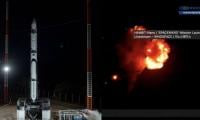ISLAMABAD: The Indian Air Force (IAF) has lost 2,374 aircraft in crashes up to September 2023, including 1,126 fighter jets and 1,248 non-fighter aircraft.
In addition, 229 trainers and 196 helicopters have crashed. These incidents have resulted in the deaths of 1,305 skilled pilots.
The figures have been shared by official Indian media sources. Indian experts have maintained publicly that one of the most worrying shortfalls in India’s defence preparedness is in the IAF’s fleet of combat aircraft.
The number of combat aircraft lost exceeds 50 squadrons. Some of these aircraft and pilots were lost in action in the wars India fought against Pakistan in 1947-1948, 1965, and 1971, and to a smaller extent in the Kargil conflict in 1999.
In the 1962 War against China, the IAF did not fly combat operations. In the 1965 War, it lost 59 aircraft on the ground, many during pre-emptive strikes by the Pakistan Air Force in Pathankot and Kalaikunda, in what turned out to be a deplorable failure of Indian intelligence and preparedness. The IAF’s own history of its operations in the 1965 War acknowledges it ‘suffered disproportionately higher losses’ than the PAF.
A mitigating factor in 1965 was that the IAF was flying vintage aircraft while the PAF had the most advanced US fighters in Asia. Overall, of all the IAF’s losses, just 143 aircraft--or one out of eight aircraft lost overall--were combat casualties.
An audit report, entitled Aircraft Accidents in the Indian Air Force, 2002, by the Public Accounts Committee concluded that the IAF’s accident rate per 10,000 hours of flying ranged ‘between 0.89 and 1.52 during the period 1991-97’; for fighters it ‘ranged between 1.89 and 3.53’; while for MIG-21 variants it ‘ranged between 2.29 and 3.99’.
In comparison, fighter aircraft accident rates in the US air force were 0.29 in the 1990s, 0.15 in the 2000s, and 0.1 between 2010 and 2018. A debate in Parliament in 1982 reflected the concern that the IAF had lost nearly as many aircraft in accidents in just the previous two years as in the entire 1971 War.
Since then numerous committees have periodically examined the issue. Three causes of accidents were broadly identified: Human error, technical defects, and nature, which include hostile weather and bird hits.
Technical defects included poor maintenance and the non-availability of spare parts, especially for MiG variants after the collapse of the Soviet Union. But they also reflected the obsolescence that inevitably crept in from flying aircraft like the decades-old MiG-21s, which were already being ridiculed as ‘flying coffins’ and ‘widow makers’. Even in those years, it was evident that about half the IAF’s crashes were ascribable to human error.
Reports indicated lapses in basic training and repeated failures to upgrade the HPT-32 Stage-1 trainer aircraft, on which IAF pilots learned the ABC of flying. The 1980s and 1990s recorded alarming numbers of trainer aircraft crashes, with higher fatalities as a consequence of both the trainer and the trainee pilot perishing. The IAF grounded the HPT-32 only after 19 pilots were killed in 17 accidents over 23 years of flying.















